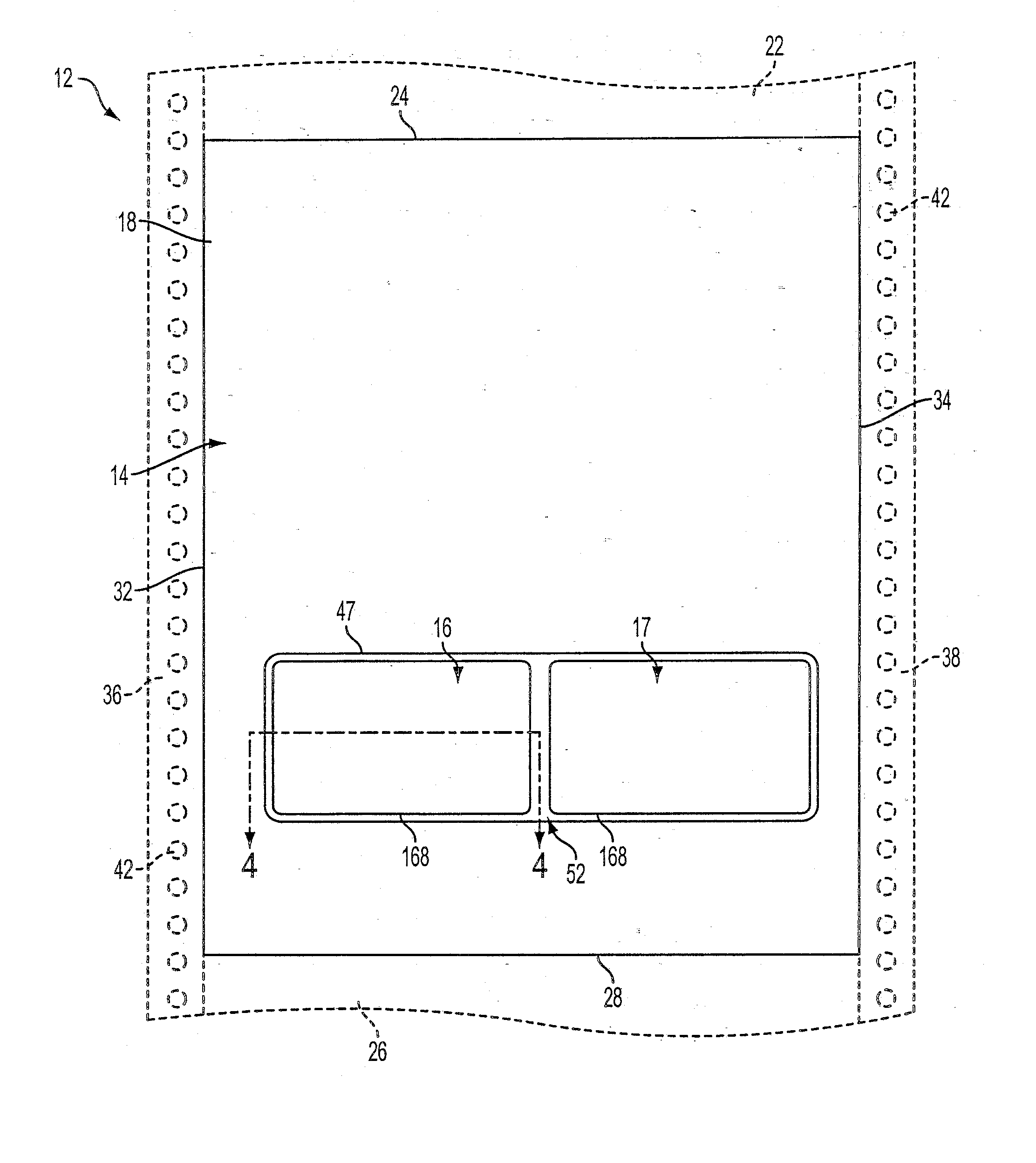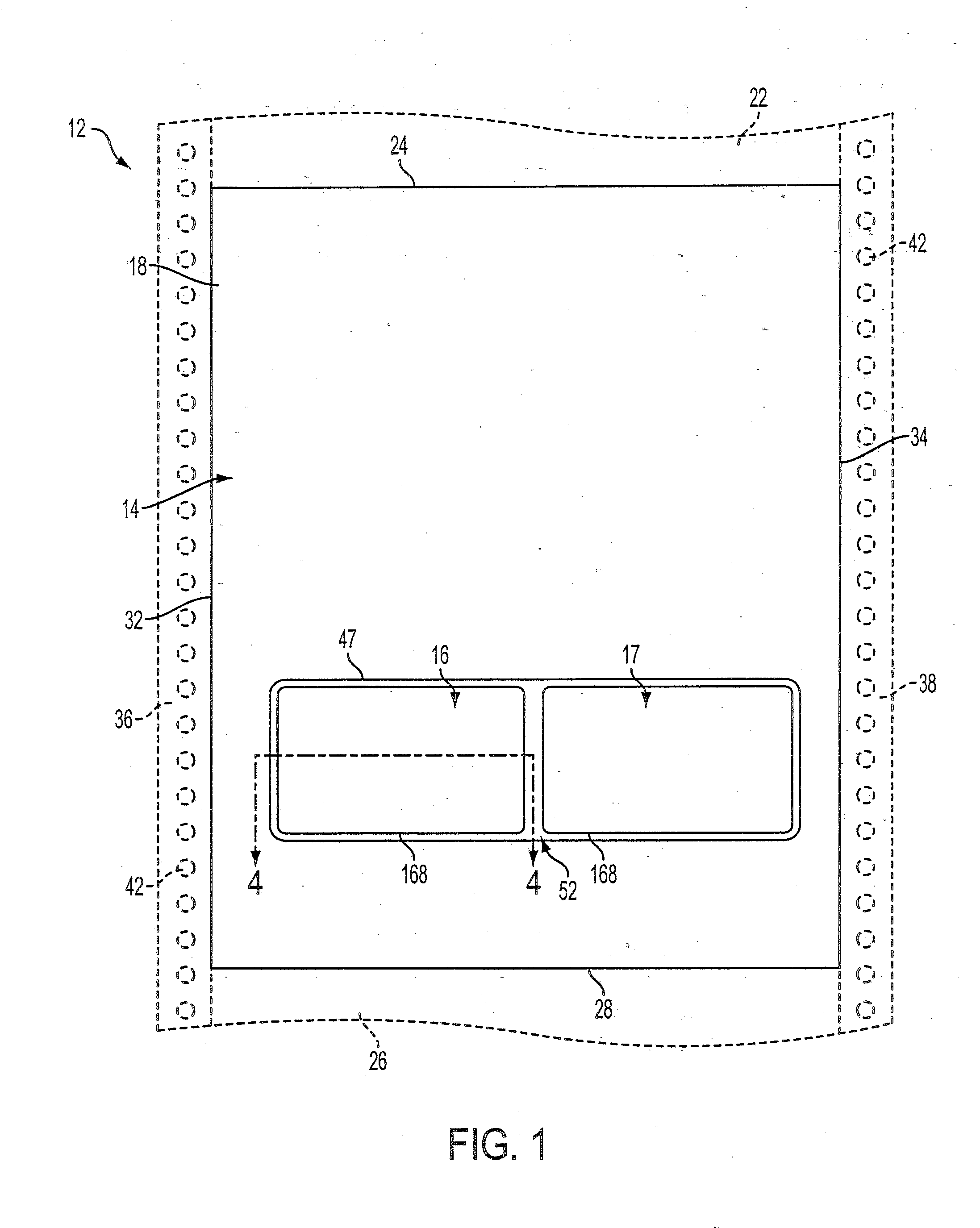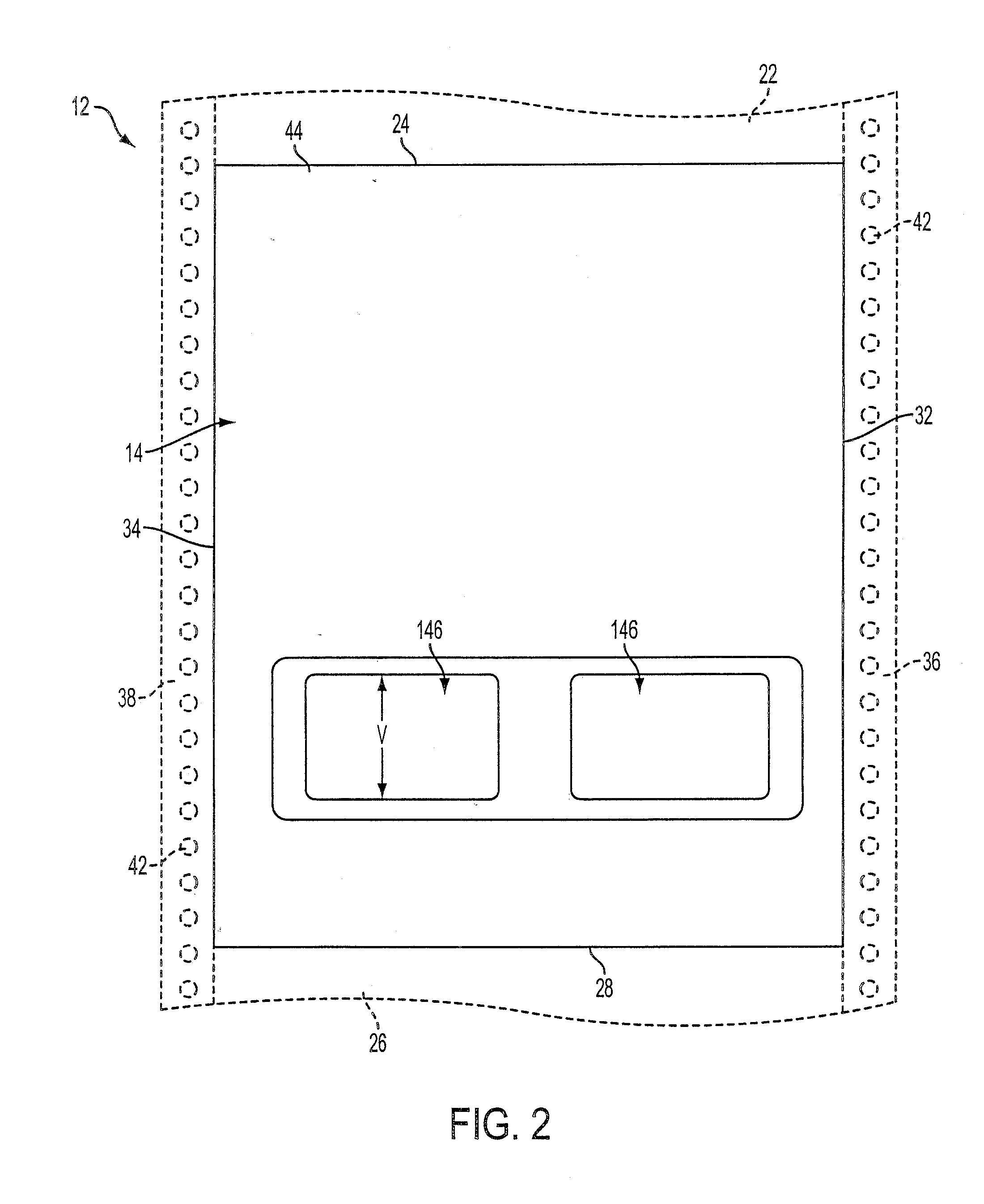Document Sheet With Recessed Cavity and Window Two-Sided Printing of an Object Received Therein
- Summary
- Abstract
- Description
- Claims
- Application Information
AI Technical Summary
Benefits of technology
Problems solved by technology
Method used
Image
Examples
Embodiment Construction
[0023]FIGS. 1 through 4 show different views of an embodiment of a document sheet (12) constructed in accordance with a method so as to provide at least 60% of the back of the object to be available for printing. The document sheet (12) of this embodiment is basically comprised of a sheet of material (14) and two objects (16) and (17) adhered to the front surface (18) of the sheet. While two objects (16) and (17) are shown in this embodiment, one of ordinary skill in the art would understand that one or more objects may be included in different embodiments of the invention. The sheet of material (14) is shown in solid lines in FIG. 1 as a single sheet. However, in variant embodiments of the invention, the sheet of material (14) may be one of a continuous web of material sheets with a second (22) and additional like sheets connected along a top peripheral edge (24) of the sheet and a third (26) and additional like sheets connected along a bottom peripheral edge (28) of the sheet.
[00...
PUM
 Login to View More
Login to View More Abstract
Description
Claims
Application Information
 Login to View More
Login to View More - R&D
- Intellectual Property
- Life Sciences
- Materials
- Tech Scout
- Unparalleled Data Quality
- Higher Quality Content
- 60% Fewer Hallucinations
Browse by: Latest US Patents, China's latest patents, Technical Efficacy Thesaurus, Application Domain, Technology Topic, Popular Technical Reports.
© 2025 PatSnap. All rights reserved.Legal|Privacy policy|Modern Slavery Act Transparency Statement|Sitemap|About US| Contact US: help@patsnap.com



